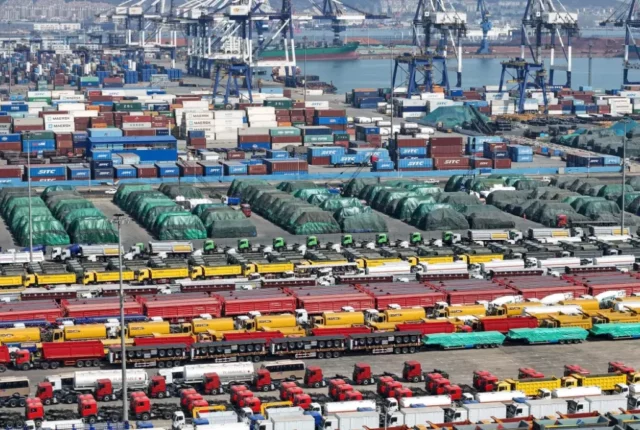
Reverse Logistics: Enhancing Sustainability through Efficient Product Returns
In today’s consumer-driven economy, product returns have become a common occurrence. Whether due to defects, dissatisfaction, or changing preferences, returned products pose significant challenges for businesses. However, forward-thinking companies are leveraging reverse logistics to transform these challenges into opportunities for enhancing sustainability. Reverse logistics refers to the process of efficiently managing product returns, repairs, replacements, and recycling. By optimizing reverse logistics, businesses can minimize waste, reduce carbon footprint, and create a more sustainable and optimized supply chain.
Reverse Logistics: An Overview
Reverse logistics encompasses a range of activities involved in handling returned products. From receiving and inspecting returned items to determining their disposition, reverse logistics is a comprehensive approach that requires careful planning and execution. Efficient reverse logistics not only saves costs but also contributes to environmental sustainability by reducing waste and conserving resources.
Key Elements of Reverse Logistics
To understand the impact of reverse logistics on sustainability, it’s essential to delve into its key elements:
- Returns Management: Effective returns management involves receiving returned products, assessing their condition, and determining the appropriate action, such as refurbishment, repair, or recycling.
- Transportation and Logistics: Reverse logistics relies on a well-designed transportation and logistics network to ensure timely and cost-effective movement of returned goods between various parties involved in the process.
- Disposition and Asset Recovery: Determining the disposition of returned products is crucial for optimizing resource efficiency. This includes decisions related to repair, resale, recycling, or disposal.
- Data Analysis and Continuous Improvement: By leveraging data analytics, companies can gain insights into return patterns, identify root causes, and implement proactive measures to reduce returns and enhance sustainability.
The Role of Reverse Logistics in Sustainability
Reverse logistics plays a pivotal role in enhancing sustainability across multiple dimensions:
- Reducing Waste: By efficiently managing returned products, businesses can minimize waste generation and contribute to waste reduction targets. Refurbishing, repairing, or recycling returned items prevents them from ending up in landfills, thereby conserving valuable resources.
- Lowering Carbon Footprint: Optimizing transportation and logistics in reverse logistics processes reduces carbon emissions. Consolidating returns and adopting greener transportation options can significantly reduce the environmental impact of reverse logistics operations.
- Resource Conservation: Reverse logistics enables businesses to recover valuable resources from returned products. Components, materials, and packaging can be recycled or repurposed, reducing the need for virgin resources and supporting a circular economy.
The Benefits of Efficient Reverse Logistics
Efficient reverse logistics practices offer numerous benefits to businesses, customers, and the environment. Let’s explore these advantages in detail:
- Cost Savings: Implementing effective reverse logistics can reduce costs associated with product returns. By refurbishing and reselling returned items, businesses can recover value and minimize financial losses.
- Improved Customer Satisfaction: Streamlining the returns process enhances customer satisfaction by providing a hassle-free experience. Prompt refunds, exchanges, or repairs build trust and loyalty among customers.
- Enhanced Sustainability Credentials: Prioritizing sustainable reverse logistics practices showcases a company’s commitment to environmental responsibility. It can improve brand reputation and attract eco-conscious customers.
- Optimized Inventory Management: Reverse logistics helps businesses gain better visibility into product returns, enabling improved inventory planning and reducing stockouts or overstocking issues.
- Market Insights and Innovation: Analyzing return data can offer valuable insights into product quality, customer preferences, and market trends. This information can drive product innovation and improvement.
Best Practices for Implementing Efficient Reverse Logistics
To harness the full potential of reverse logistics, businesses should adopt the following best practices:
- Streamlined Returns Policy: Establish clear and customer-friendly returns policies to simplify the process for customers. Clear guidelines on return eligibility, timeframes, and refund options can minimize confusion and ensure smooth returns.
- Collaboration with Partners: Effective reverse logistics requires collaboration among various stakeholders, including suppliers, retailers, and logistics providers. Close partnerships facilitate seamless returns and improve overall efficiency.
- Robust Tracking and Traceability: Implement systems to track returned products throughout the reverse logistics process. This enhances transparency, reduces losses, and ensures accurate disposition decisions.
- Investment in Technology: Embrace technology solutions such as barcode scanning, RFID tagging, and data analytics to streamline reverse logistics operations. These tools automate processes, improve accuracy, and enhance decision-making.
- Continuous Improvement: Regularly analyze return data to identify patterns, root causes, and areas for improvement. Implement corrective actions to minimize returns and enhance sustainability.
Frequently Asked Questions (FAQs)
- What is reverse logistics? Reverse logistics refers to the process of managing product returns, repairs, replacements, and recycling in an efficient and sustainable manner.
- How does reverse logistics contribute to sustainability? Reverse logistics reduces waste by refurbishing, repairing, or recycling returned products. It also minimizes carbon emissions through optimized transportation and logistics practices.
- What are the benefits of efficient reverse logistics? Efficient reverse logistics offers cost savings, improved customer satisfaction, enhanced sustainability credentials, optimized inventory management, and market insights for innovation.
Conclusion
Reverse logistics is a powerful tool for enhancing sustainability through efficient product returns. By adopting best practices and leveraging technology, businesses can minimize waste, reduce carbon footprint, and optimize resource efficiency. Embracing reverse logistics not only benefits the bottom line but also demonstrates environmental responsibility and fosters customer loyalty. As companies continue to prioritize sustainability, the integration of reverse logistics into their supply chain strategies becomes imperative.






